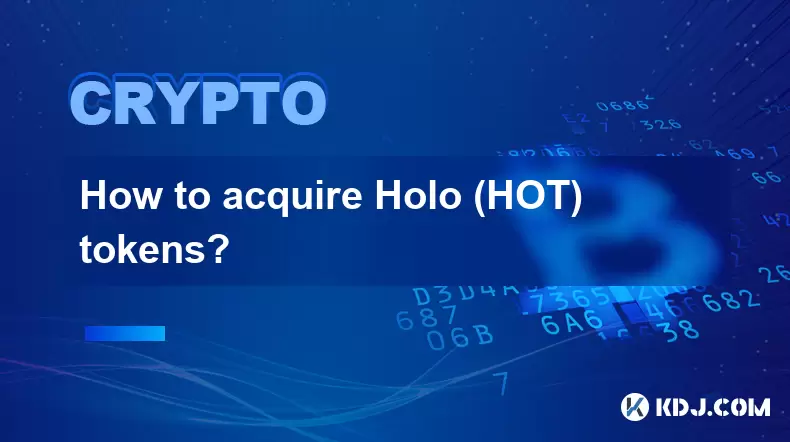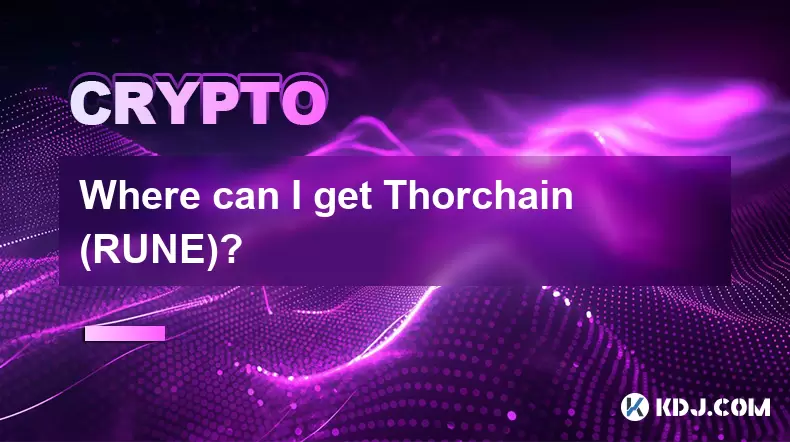-
 Bitcoin
Bitcoin $117500
2.15% -
 Ethereum
Ethereum $3911
6.19% -
 XRP
XRP $3.316
10.79% -
 Tether USDt
Tether USDt $1.000
0.01% -
 BNB
BNB $787.2
2.24% -
 Solana
Solana $175.2
4.15% -
 USDC
USDC $0.9999
0.00% -
 Dogecoin
Dogecoin $0.2225
8.40% -
 TRON
TRON $0.3383
0.28% -
 Cardano
Cardano $0.7868
6.02% -
 Stellar
Stellar $0.4382
9.34% -
 Hyperliquid
Hyperliquid $40.92
7.56% -
 Sui
Sui $3.764
7.63% -
 Chainlink
Chainlink $18.48
10.66% -
 Bitcoin Cash
Bitcoin Cash $582.1
1.88% -
 Hedera
Hedera $0.2601
6.30% -
 Avalanche
Avalanche $23.33
4.94% -
 Ethena USDe
Ethena USDe $1.001
0.02% -
 Litecoin
Litecoin $122.3
2.04% -
 UNUS SED LEO
UNUS SED LEO $8.969
-0.27% -
 Toncoin
Toncoin $3.339
0.86% -
 Shiba Inu
Shiba Inu $0.00001287
4.30% -
 Uniswap
Uniswap $10.43
7.38% -
 Polkadot
Polkadot $3.861
5.08% -
 Dai
Dai $1.000
0.02% -
 Bitget Token
Bitget Token $4.513
3.41% -
 Monero
Monero $267.7
-6.18% -
 Cronos
Cronos $0.1499
4.14% -
 Pepe
Pepe $0.00001110
5.15% -
 Aave
Aave $284.9
8.28%
How are Cardano's cross-chain transactions achieved?
Cardano's robust cross-chain transaction mechanism, enabled by sidechains, Hydra, and rigorous security measures, facilitates seamless and secure asset transfer between different blockchain networks.
Feb 17, 2025 at 04:24 pm

Key Points of the Article:
- Understanding the Concept of Cross-Chain Transactions
- Cardano's Approach to Cross-Chain Interoperability
- The Role of Hydra in Cardano's Cross-Chain Transactions
- Interoperability Challenges and Potential Solutions
- Addressing Security Concerns in Cross-Chain Transactions
- The Future of Cross-Chain Interoperability on Cardano
How are Cardano's cross-chain transactions achieved?
Cardano (ADA) is a third-generation blockchain protocol that aims to address scalability, interoperability, and security challenges faced by previous blockchain generations. Cross-chain transactions, which involve the transfer of tokens or data between different blockchain networks, are a crucial aspect of today's interconnected digital ecosystem. Cardano has developed a robust cross-chain transaction mechanism to facilitate seamless interoperability with other blockchain platforms.
Understanding the Concept of Cross-Chain Transactions
Cross-chain transactions enable the transfer of assets or information between blockchains that operate independently. These transactions present several challenges, including differences in consensus mechanisms, token standards, and security models. To facilitate cross-chain transactions, a bridge or intermediary platform is required to connect the individual blockchains.
Cardano's Approach to Cross-Chain Interoperability
Cardano's cross-chain interoperability solution is based on sidechains - separate blockchain networks that connect to the main Cardano blockchain. These sidechains can adopt different consensus mechanisms and support varied token standards, allowing for flexibility and customization in cross-chain interactions.
The Role of Hydra in Cardano's Cross-Chain Transactions
hydra is a scaling solution for the Cardano blockchain that is crucial for facilitating cross-chain transactions. Hydra introduces a layered architecture with multiple parallel chains, each dedicated to processing specific tasks. This approach significantly increases Cardano's transaction throughput and allows for faster and more efficient cross-chain interactions.
Interoperability Challenges and Potential Solutions
Despite the benefits of cross-chain transactions, several challenges remain in achieving seamless interoperability between different blockchains. These challenges include:
- Technical Incompatibility: Blockchains operate on different protocols and use varied token standards, which can hinder interoperability.
- Security Concerns: Interconnecting different blockchain networks may introduce new vulnerabilities and security risks.
- Legal and Regulatory Compliance: Cross-chain transactions may fall under different jurisdictions and regulations, creating legal and compliance challenges.
To address these challenges, ongoing research and development focus on developing standardized cross-chain communication protocols, enhancing security measures, and establishing clear legal and regulatory frameworks for cross-chain transactions.
Addressing Security Concerns in Cross-Chain Transactions
Security is a paramount concern in cross-chain transactions, as it involves transferring assets between different blockchain networks. Cardano incorporates several security measures to mitigate risks:
- Rigorous vetting of sidechains: Sidechains connected to Cardano are subject to thorough security assessments and audits to ensure their integrity and trustworthiness.
- Byzantine Fault Tolerance (BFT): Hydra utilizes BFT, a consensus mechanism that tolerates malicious behavior, enhancing the security and reliability of cross-chain transactions.
- Cross-chain verification: Cardano employs multi-signature schemes and smart contract mechanisms to verify cross-chain transactions, ensuring the authenticity and validity of asset transfers.
The Future of Cross-Chain Interoperability on Cardano
The future of cross-chain interoperability on Cardano looks promising with the continuous development and implementation of new technologies:
- Expanding Cross-Chain Compatibility: Cardano plans to expand its cross-chain capabilities by connecting with more external blockchain networks and supporting a wider range of asset types.
- Enhanced Scalability and Efficiency: Ongoing research on Hydra and other scaling solutions aims to further enhance the throughput and efficiency of cross-chain transactions.
- Security and Privacy Advancements: Future developments will focus on improving security measures, implementing privacy-enhancing technologies, and establishing best practices for cross-chain interactions.
FAQs About Cardano's Cross-Chain Transactions
- Which platforms does Cardano currently support for cross-chain transactions?
Cardano is actively working to expand its cross-chain interoperability. Currently, it supports connections to the Ergo blockchain and plans to integrate with various other platforms in the future.
- How does Cardano ensure the security of cross-chain transactions?
Cardano employs rigorous sidechain vetting, Byzantine Fault Tolerance, and cross-chain verification mechanisms to enhance the security and reliability of cross-chain transactions.
- What are the benefits of using Cardano for cross-chain transactions?
Cardano offers several benefits for cross-chain transactions, including its flexible sidechain approach, the scalability and efficiency of Hydra, and its commitment to security and regulatory compliance.
- How can developers leverage Cardano's cross-chain capabilities?
Developers can utilize Cardano's cross-chain interoperability through the Cardano Development Kit (CDK), which provides APIs and tools for building and deploying cross-chain applications.
- What is the roadmap for Cardano's cross-chain development?
Cardano's roadmap for cross-chain development involves expanding compatibility, enhancing scalability and efficiency, and continuously improving security measures to facilitate seamless and secure cross-chain transactions.
Disclaimer:info@kdj.com
The information provided is not trading advice. kdj.com does not assume any responsibility for any investments made based on the information provided in this article. Cryptocurrencies are highly volatile and it is highly recommended that you invest with caution after thorough research!
If you believe that the content used on this website infringes your copyright, please contact us immediately (info@kdj.com) and we will delete it promptly.
- SNEK, Cardano, and the Contributor's Conundrum: A Meme Coin's Fight for Recognition
- 2025-08-08 16:30:12
- Toshi Crypto's Wild Ride: Rally, Demand Slump, and What's Next
- 2025-08-08 16:30:12
- Ethereum, Staking Yields, and DeFi Exposure: A New Era for Investors?
- 2025-08-08 15:10:12
- Unilabs Pumps MIA, Binance Coin Bouncing Back, and Ethereum's Bearish Blues
- 2025-08-08 15:10:12
- Ethereum's Wyckoff Markup and Market Rotation: A New Era?
- 2025-08-08 15:30:12
- Ethereum, Vitalik Buterin, and the Overleveraged Game: A Balancing Act
- 2025-08-08 15:30:12
Related knowledge

Where can I buy UMA (UMA)?
Aug 07,2025 at 06:42pm
Understanding UMA and Its Role in Decentralized FinanceUMA (Universal Market Access) is an Ethereum-based decentralized finance (DeFi) protocol design...

Where can I purchase Siacoin (SC)?
Aug 08,2025 at 11:14am
Understanding Siacoin (SC) and Its Role in the Sia NetworkSiacoin (SC) is the native cryptocurrency of the Sia decentralized cloud storage platform, a...

Where can I buy OMG Network (OMG)?
Aug 08,2025 at 12:57pm
Understanding OMG Network (OMG) and Its PurposeThe OMG Network, originally known as OmiseGO, is a layer-2 scaling solution built on the Ethereum block...

What exchanges support buying IOTA (MIOTA)?
Aug 07,2025 at 09:58pm
Understanding the Role of Private Keys in Cryptocurrency SecurityIn the world of cryptocurrency, private keys are the cornerstone of ownership and con...

How to acquire Holo (HOT) tokens?
Aug 08,2025 at 05:56am
Understanding Holo (HOT) and Its EcosystemHolo (HOT) is a cryptocurrency token associated with the Holo ecosystem, which is built on the Holochain fra...

Where can I get Thorchain (RUNE)?
Aug 08,2025 at 08:07am
Understanding the Role of Seed Phrases in Cryptocurrency WalletsA seed phrase, also known as a recovery phrase or mnemonic phrase, is a critical compo...

Where can I buy UMA (UMA)?
Aug 07,2025 at 06:42pm
Understanding UMA and Its Role in Decentralized FinanceUMA (Universal Market Access) is an Ethereum-based decentralized finance (DeFi) protocol design...

Where can I purchase Siacoin (SC)?
Aug 08,2025 at 11:14am
Understanding Siacoin (SC) and Its Role in the Sia NetworkSiacoin (SC) is the native cryptocurrency of the Sia decentralized cloud storage platform, a...

Where can I buy OMG Network (OMG)?
Aug 08,2025 at 12:57pm
Understanding OMG Network (OMG) and Its PurposeThe OMG Network, originally known as OmiseGO, is a layer-2 scaling solution built on the Ethereum block...

What exchanges support buying IOTA (MIOTA)?
Aug 07,2025 at 09:58pm
Understanding the Role of Private Keys in Cryptocurrency SecurityIn the world of cryptocurrency, private keys are the cornerstone of ownership and con...

How to acquire Holo (HOT) tokens?
Aug 08,2025 at 05:56am
Understanding Holo (HOT) and Its EcosystemHolo (HOT) is a cryptocurrency token associated with the Holo ecosystem, which is built on the Holochain fra...

Where can I get Thorchain (RUNE)?
Aug 08,2025 at 08:07am
Understanding the Role of Seed Phrases in Cryptocurrency WalletsA seed phrase, also known as a recovery phrase or mnemonic phrase, is a critical compo...
See all articles

























































































